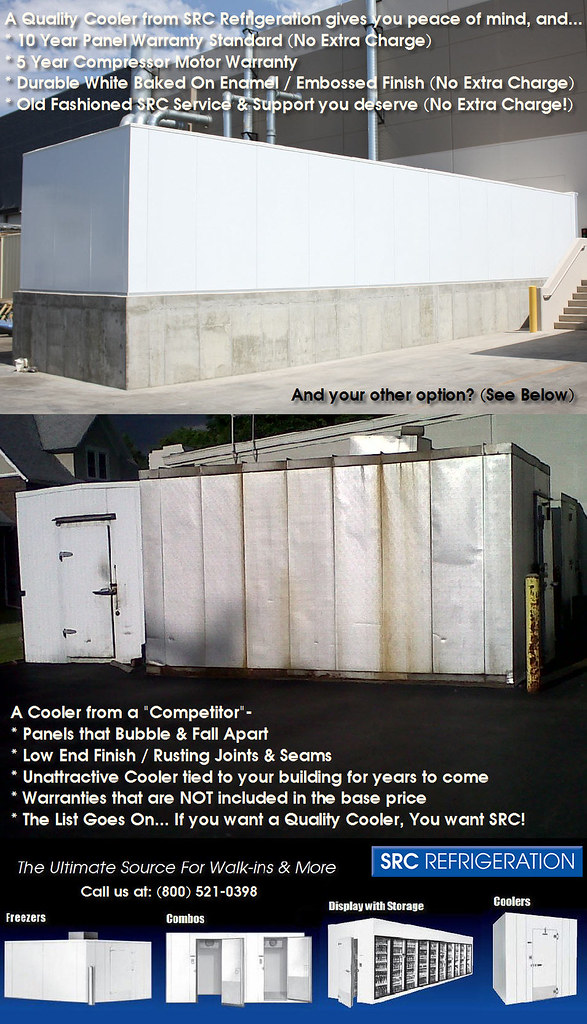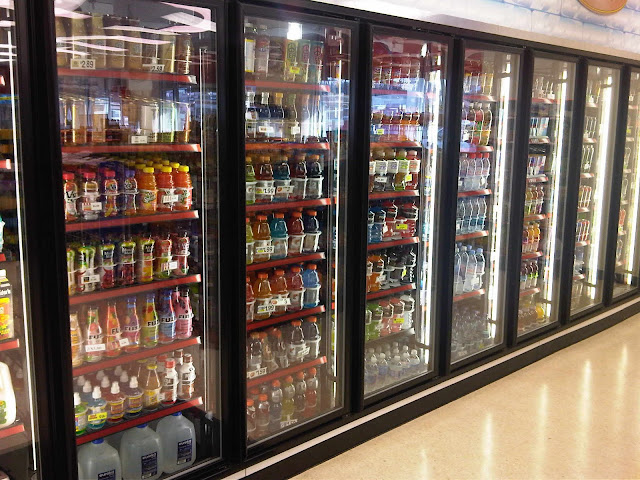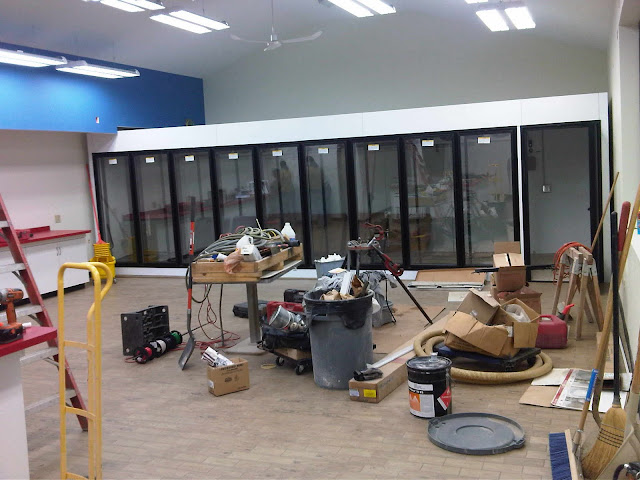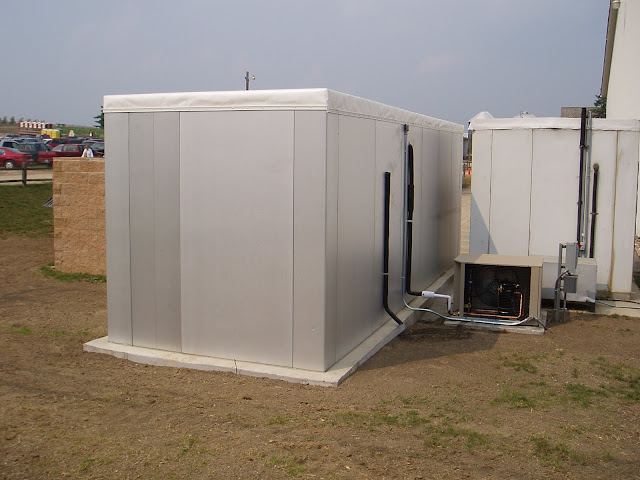"Help! My product is freezing. What should I do? How do I adjust the temperature and what should I set it to?"
Here’s what’s going on: Air directly exiting the evaporator coil is approximately 10 degrees colder than the overall temperature in your walk in cooler. So, products placed too close to the coil may be damaged. You could adjust your shelving positions or make a temperature adjustment to warm the overall display. It should be operating between 38 to 42 degrees Fahrenheit. Read below for instructions on how to adjust your walk in cooler’s temperature!
If this does not remedy the problem, perform routine maintenance (read here for help with that). Ensure that the condenser coil is clean and make a slight temperature adjustment to warm your walk in cooler a few degrees. If there is no change, and the compressor is running continuously, there may be a problem with the control system. Place a service call to have your walk in cooler examined.
For more information about possible causes, read HVAC Fun's "Troubleshooting a Frozen Refrigeration Evaporator Coil", or check out our post, "My Walk in Cooler is Blowing Warm Air!"
BEFORE YOU ADJUST THE TEMPERATURE:
First, determine what the true temperature is in your walk in cooler. Immerse a floating aquarium thermometer in a vase of water somewhere inside. This will give an accurate reading as to the current set point. As stated previously, we recommend a setting somewhere between 38 to 42 degrees Fahrenheit for optimum performance. Perform normal preventative maintenance prior to any temperature adjustment being performed. Adjustments should not be made to compensate for poorly maintained equipment.
Now, if your product is freezing, you're probably not going to be lowering the temperature of your walk in cooler. However, I wanted to make this a complete guide, so it's important I mention these next few cautionary tips. Consideration should be given to these factors prior to lowering the temperature of your walk in cooler:
1. Each degree you lower the temperature will consume more energy, leading to higher bills.
2. Compressor run times will increase, decreasing the lifetime of the walk in cooler equipment. More heat and noise will be generated in your store.
3. The possibility of freezing product or iced coils will increase. Product loss wastes time and money—and is not covered by any equipment warranties.
ADJUSTING THE TEMPERATURE CONTROL:
IMPORTANT: These controls are very sensitive, so only make small adjustments, and let the temperature stabilize over a few hours. Don’t make any further adjustments before this.
If you determine that an adjustment is required, here are 3 steps to help you do so:
1. Locate the temperature control. Since it is supplied as a loose part for field installation, it may be mounted anywhere on your walk in cooler. Most typically, it will be mounted within the walk in cooler. It is a small unit, usually with two scales, adjustment screws, and a copper sensing probe off the bottom. Electrical conduit will enter the bottom of the control.
*** Be careful! All of our walk in coolers are also equipped with pressure controls and can appear very similar to temperature controls. They are usually mounted as part of the condensing unit. Only trained technicians should adjust these controls. The scales of pressure controls always refer to pressure (P.S.I., bar, etc.) rather than degrees of temperature.
2. There are two scales on the control. One scale measures the set point and the other scale shows the differential. The temperature swing or range of your walk in cooler is determined by the control set point, plus or minus the differential setting, depending on what model you have. It is usually not necessary to adjust the differential of the control.
3. There will be either a screw or a knob located directly above both scales. Turn the adjusting screw above the temperature scale to move the indicator towards the desired setting. Remember to move the indicator in only small increments at a time.

















